Olive pythons can grow up to 6m in length, making them one of Australia’s largest pythons. They originate from the very north of Western Australia, the Northern Territory and Queensland. There is also a subspecies L. o. barroni, which lives in the Pilbara region of Western Australia.
Olive pythons prefer dry and rocky habitats which match their colouring of an olive colour through to dark brown, with a pale or white underside.
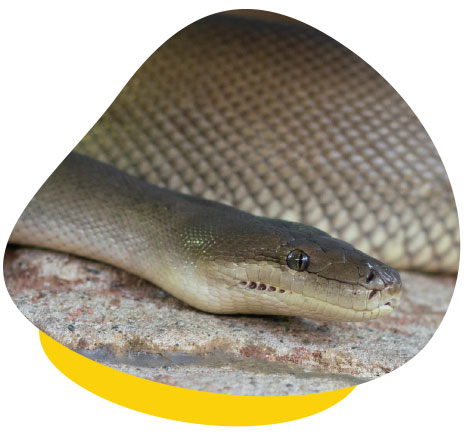
Housing
Olive pythons are best housed separately, except when breeding. Hatchlings can be kept in small lunch box size tubs provided several suitable hides, a clean freshwater source, appropriate heating, and a climbing branch are provided. Subadult or adult olive pythons can be adequately housed indoors in a ventilated vivarium which must be secure and escape-proof.
The length of the enclosure is more important than the height, given that this species is primarily terrestrial. Wire fronted vivariums are unsuitable for snakes. The vivarium must be adequately ventilated, and any build-up of condensation could indicate damp conditions, poor ventilation, or both. Appropriate measures should be undertaken to avoid such situations they can predispose them to a wide range of medical problems.
Captive Environment
Vivarium furnishings should be kept simple, with no sharp edges or points and a few appropriate hides. These should be constructed so you can access the snake at any time. Try not to clutter up the vivarium to allow plenty of room for the snake to move around and exercise.
The floor covering or substrate should be easily removable for cleaning. Some options are newspaper, paper towel, recycled paper cat litter, sand, woodchips, and indoor-outdoor carpet.
Each of the substrates has their own individual pros and cons associated with its use. For example, newspaper is cheap, clean, and easy to change however doesn’t look as aesthetically pleasing as some of the other substrate options. Sand and recycled paper cat litter generally look nicer however carry severe risks if the snake accidentally ingests any of the substrate.
Several hide boxes or rock crevices and low branches should be provided to allow the snake to retreat and to thermoregulate their own temperature at different points of the cage. Avoid the use of adhesive tape inside the vivarium, as this can come loose and pose a risk to your snake.
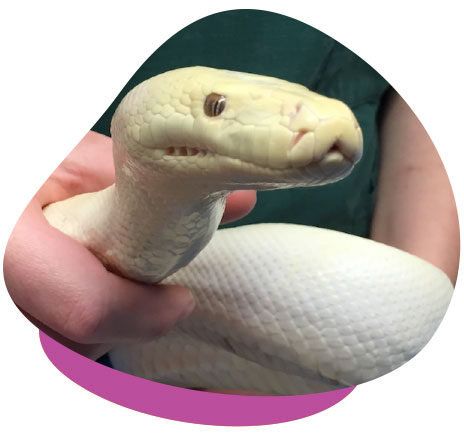
Temperature and Lighting
Like other snakes and reptiles, the olive python requires both UVA and UVB lighting, which should be replaced every 6-9 months. During the summer months, the light should be switched on for roughly 12 hours each day. During the winter months, the amount of daylight can be reduced to 10 hours a day.
A temperature gradient should always be provided by placing a heating lamp at one side of the vivarium, ensuring the snake cannot physically reach the lamp and get burnt. The basking spot should reach 35oC, while the cool end should be maintained around 25oC. The ambient temperature at the warm end of the cage at night should not drop lower than 20oC for any extended period. Heat mats within the enclosure and heat rocks are not recommended as they often malfunction and lead to thermal burns.
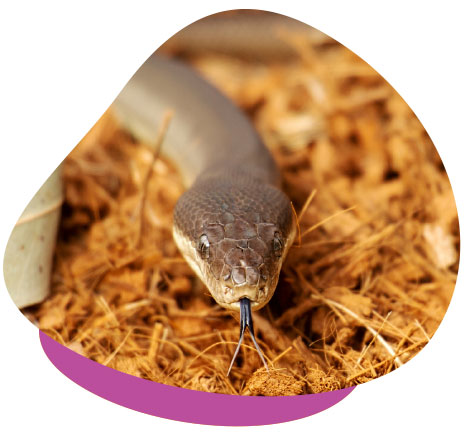
Water
Fresh clean water should always be provided in a solid, spill-proof container and changed regularly.
Food
In captivity, olive pythons will eat mice, rats, rabbits, and chickens. Adults should be fed once every 2-3 weeks while young pythons require weekly feedings, and juveniles can be offered food up to twice a week. Ensure frozen food is adequately thawed before being offered and ensure the snake has been kept warm before feeding.
Health Problems
Reptiles, in general, are very good at hiding their health problems until they become very serious. For this reason, it is very important that you get your snake checked over by an experienced reptile veterinarian every 6-12 months.
Common problems where veterinary advice is recommended include mites, wheezing, dysecdysis (trouble shedding), prolonged inappetence outside of the cooler months of the year, lethargy, diarrhoea, abnormal faeces and regurgitation.
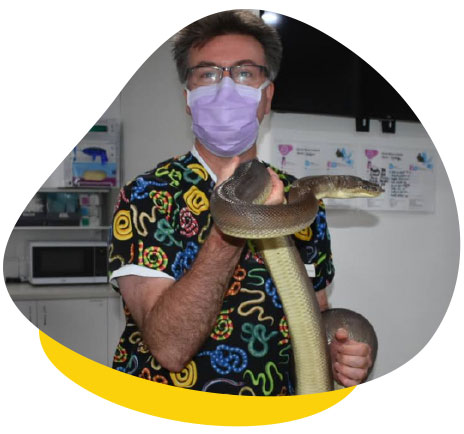
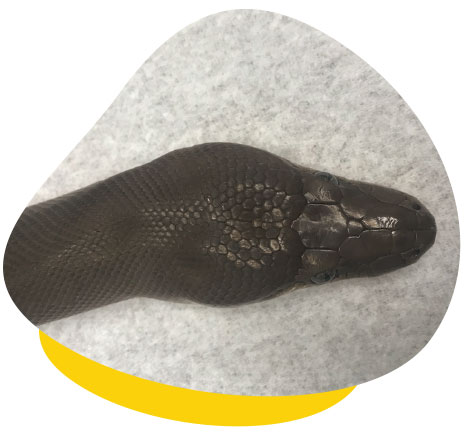
Quarantine
The length of quarantine is a contentious area with many different protocols implemented across the world. With the recent advancements in our understanding of reptile viruses and diseases, it now appears that we may not be able to ‘out-quarantine’ some of the newly discovered reptile viruses, which makes recommended a time-frame complicated. Most reptile veterinarians now recommend a quarantine period of at least six months for newly acquired snakes.
Quarantined animals should be kept in a separate room with no shared contact or airspace. Any handling, feeding, or cleaning of the cages should be completed after all the other non-quarantined animals.
If further work needs to be done with the rest of the collection after the animals are in quarantine, then a complete change of clothes and thorough disinfection of hands and any equipment used is recommended.
If you have any questions about your snake, please don’t hesitate to contact us or book an appointment online.

